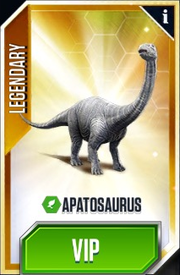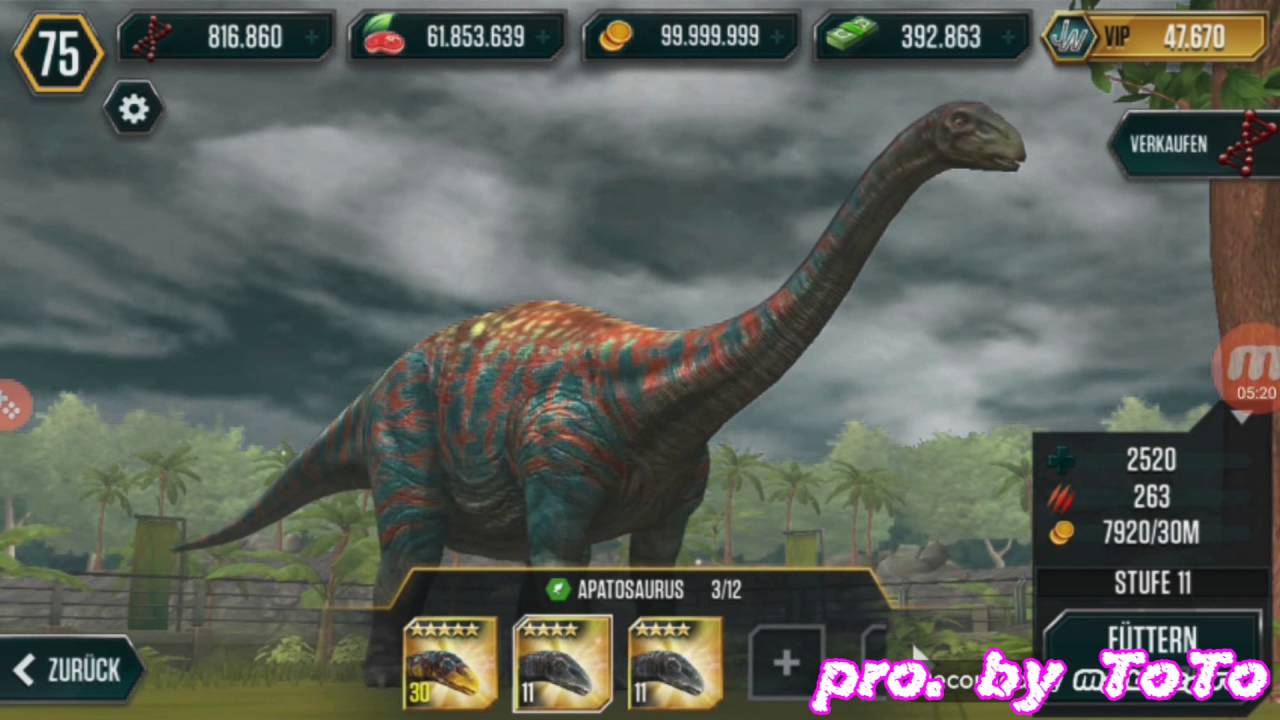


Apatosaurus probably swallowed stones that it kept in a gizzard similar to that found in a chicken. In order to facilitate the processing of food, which it could not chew with its teeth. Timed well, it could kill a full grown Allosaurus outright with a blow to the head or cause severe injury after hitting the sides of the theropod. Despite looking defenseless other than its huge size, the Apatosaurus tail was a formidable weapon: it was like a giant bullwhip, and could snap with enough force to shatter bones of attacking theropods like Allosaurus or Ceratosaurus. Apatosaurus seemed to have every adaptation needed for continuous eating. Some scientists have stated that these huge, small-headed creatures would have needed to eat every waking moment in order to provide enough food to keep such a large body alive. There is much speculation about how much these creatures needed to eat and how such a small head could ingest enough food to fuel such a large body. Compared to Diplodocus, Apatosaurus has a shorter, thicker neck, and a larger, heavier body.

It had, like the other family members, peg-like teeth in a head that seemed very small for such a large creature. In 2015, the Brontosaurus genus was revived and several species of Apatosaurus were resigned to the Brontosaurus genus.Īpatosaurus is a fairly typical member of the diplodocid family - long neck, pillar-like legs, long tapering tail and enormous size. This was named Brontosaurus and was one of the most popular dinosaurs for many years. For years, an Apatosaurus body stood with the head of Camarasaurus on the end of its neck. It was longer than two school buses and weighed as much as 4 adult male African elephants. It was a sauropod, a member of a race of huge, long-necked dinosaurs. Apatosaurus is one of the most famous of the giant Jurassic plant-eaters.


 0 kommentar(er)
0 kommentar(er)
